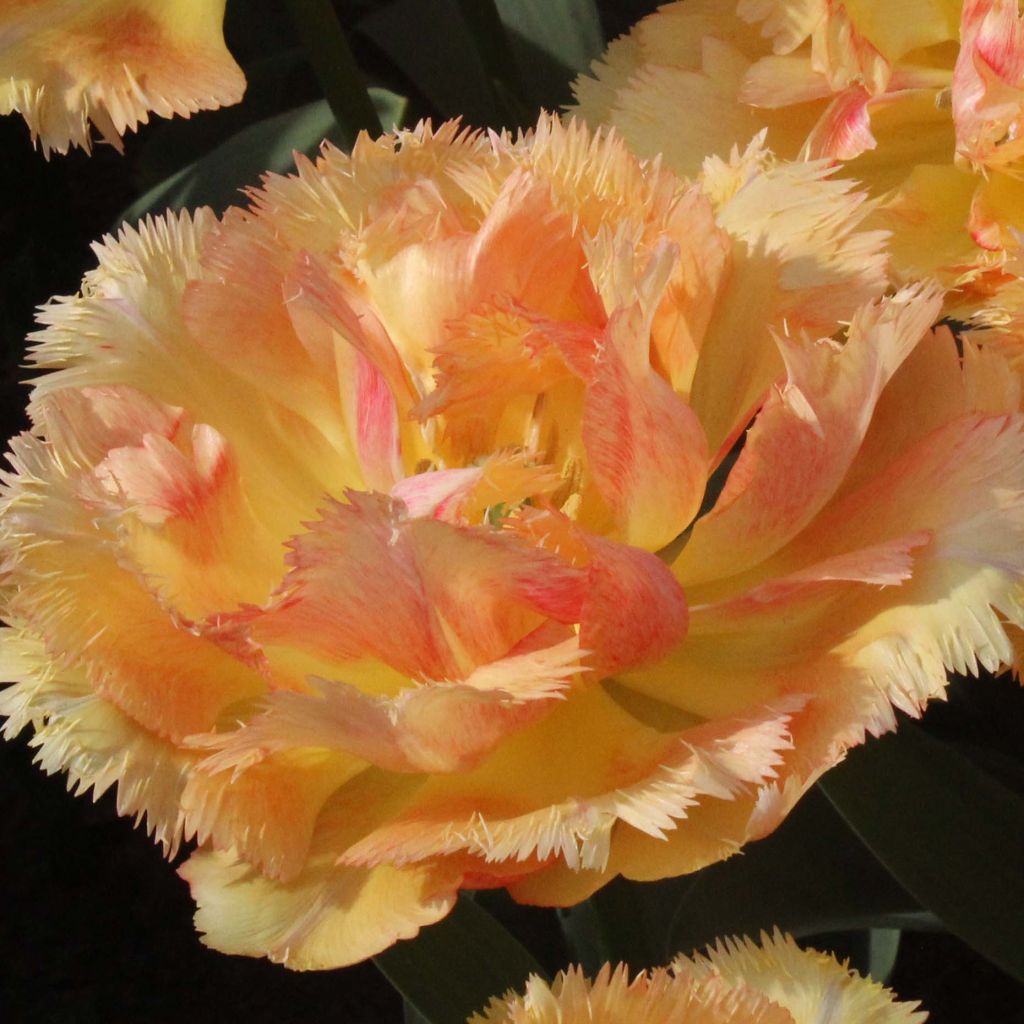

Tulipe Dentelée Double Vaya Con Dios
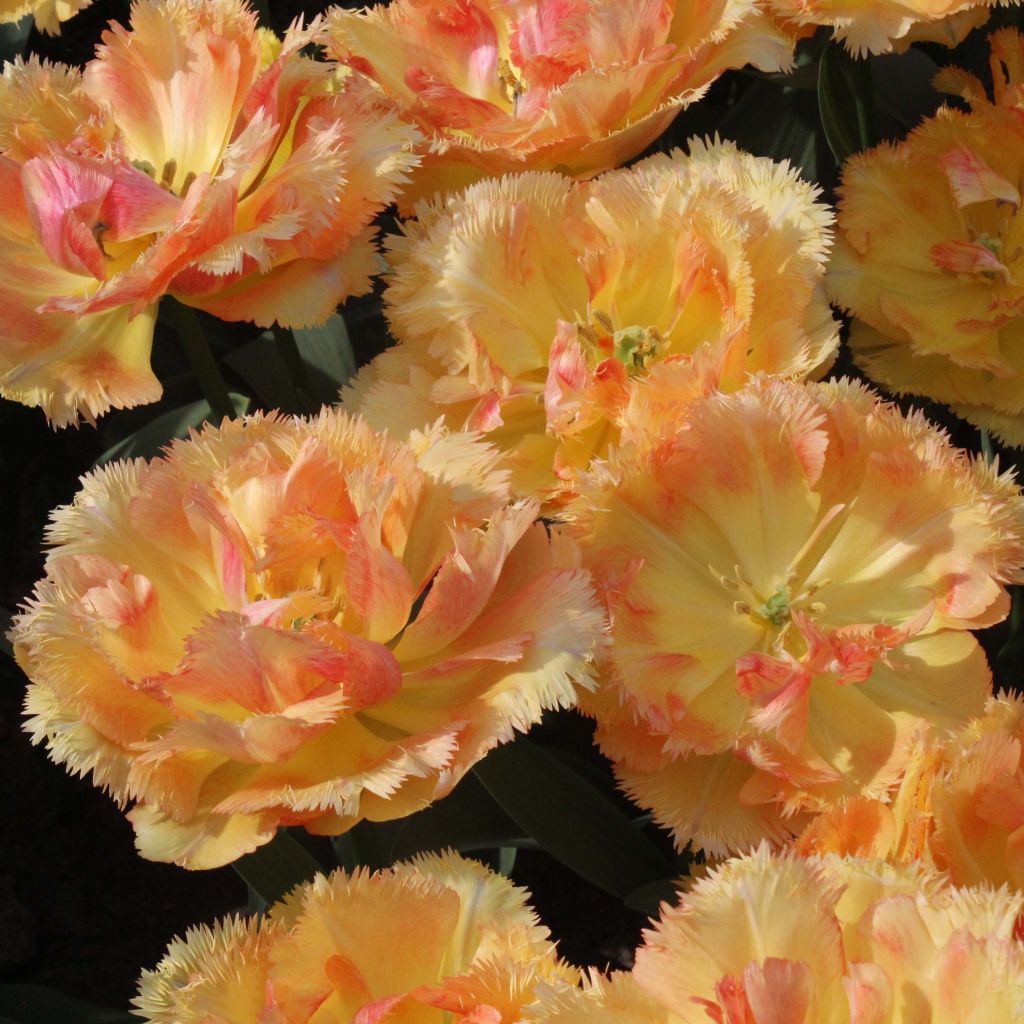

Tulipe Dentelée Double Vaya Con Dios
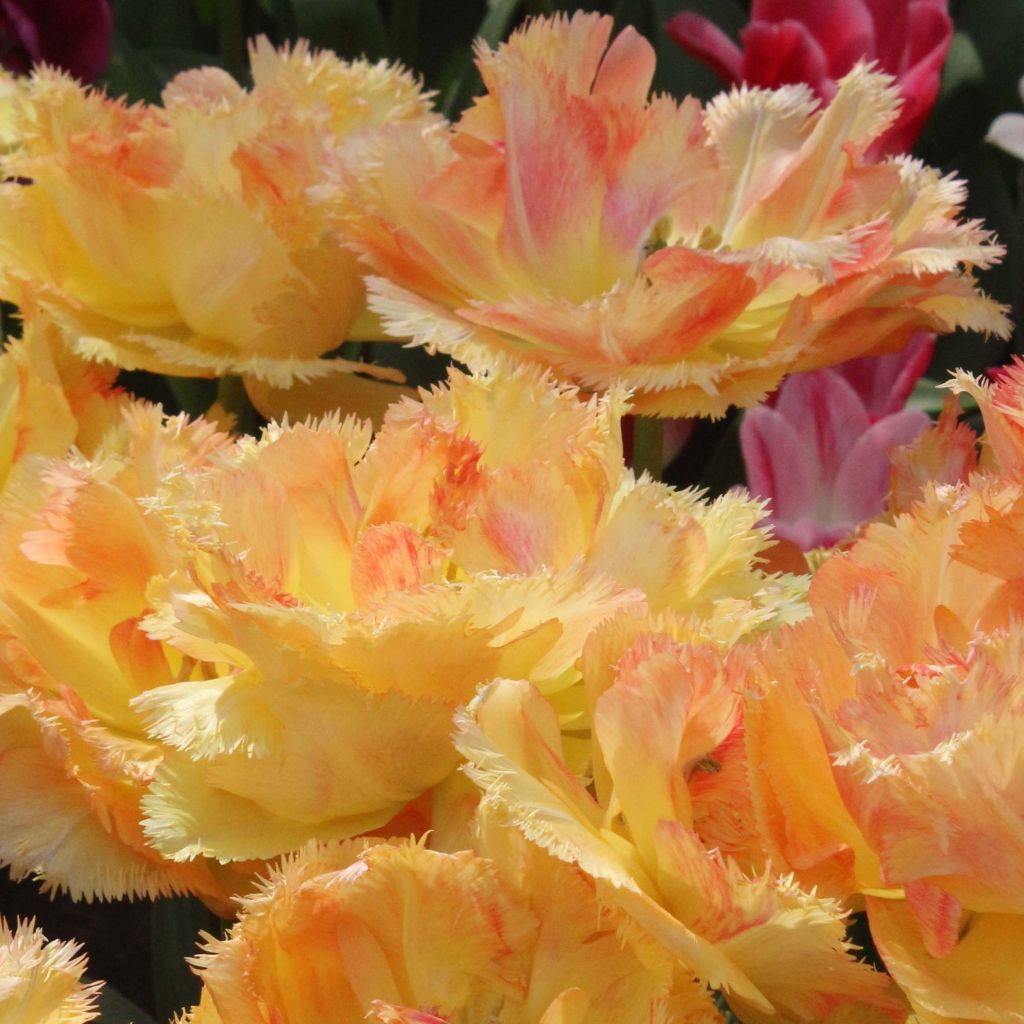

Tulipe Dentelée Double Vaya Con Dios
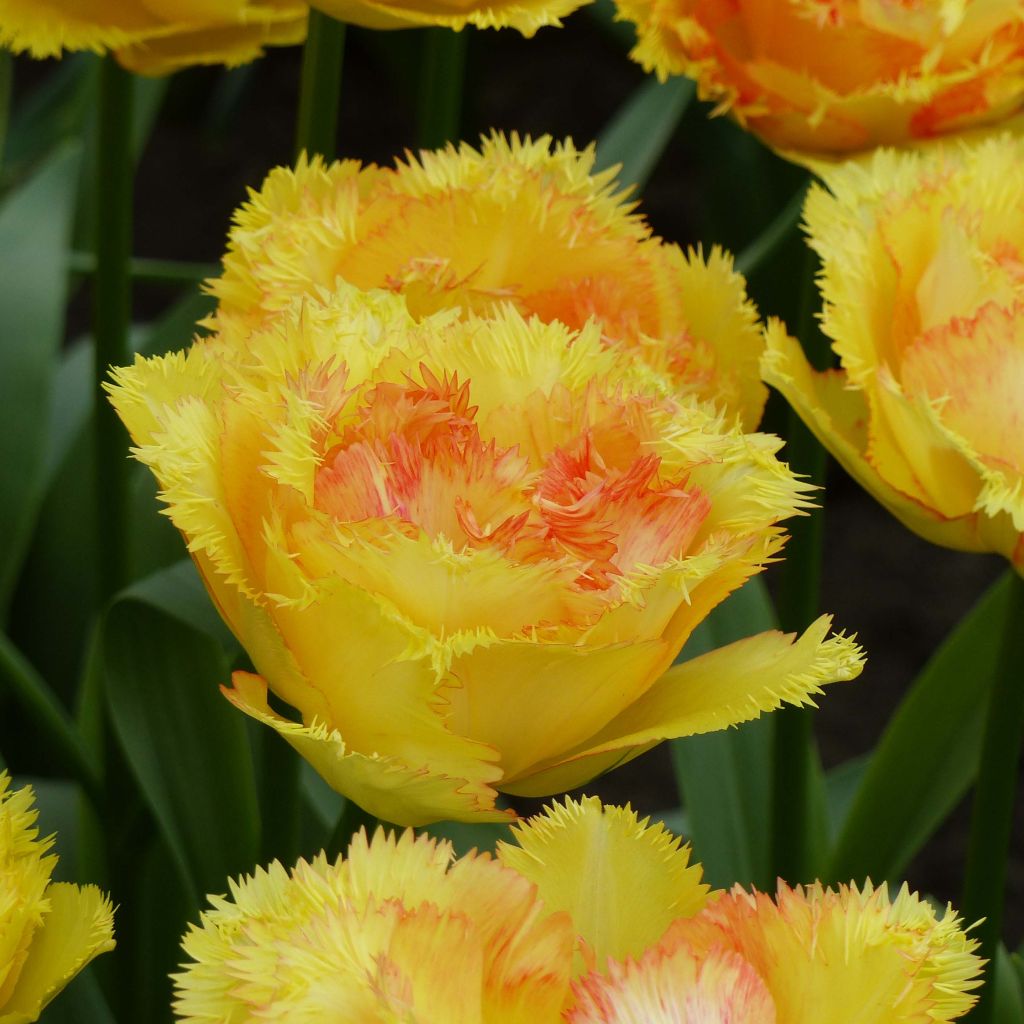

Tulipe Dentelée Double Vaya Con Dios
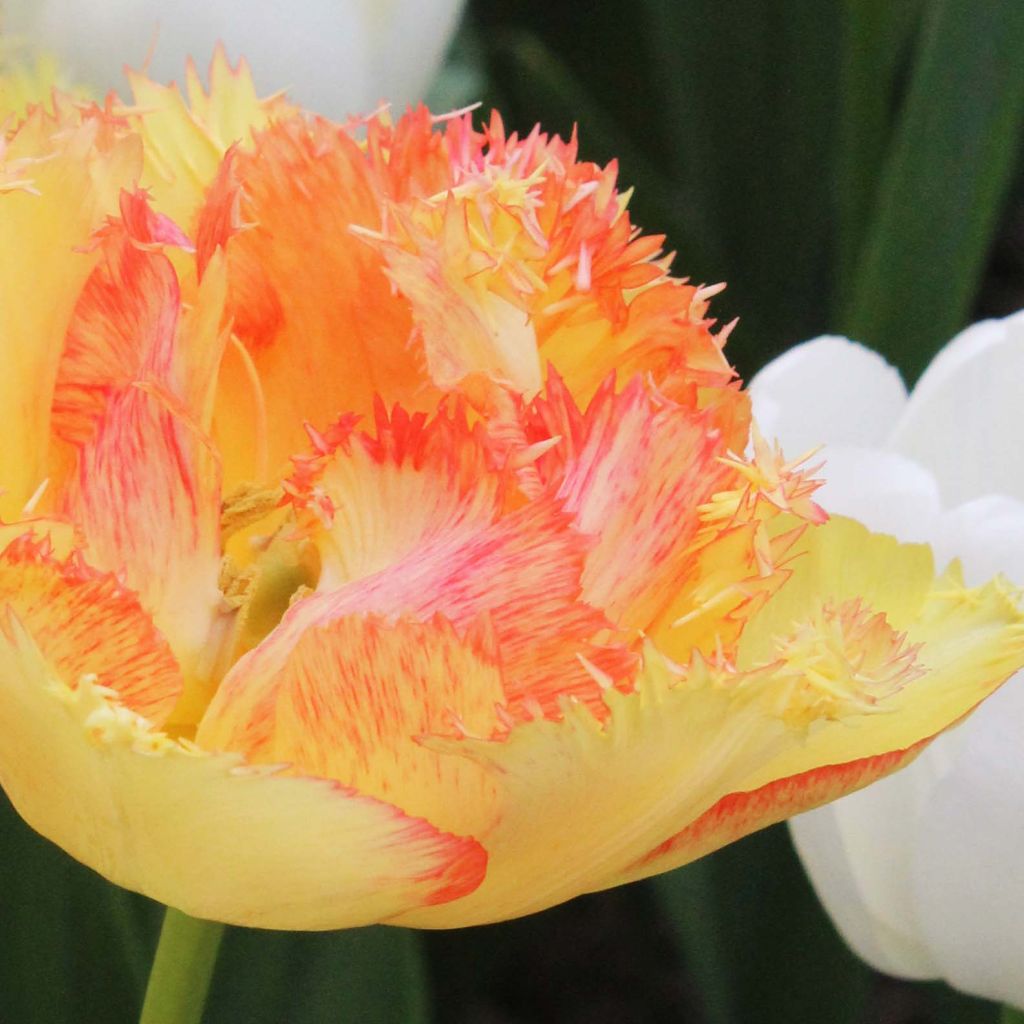

Tulipe Dentelée Double Vaya Con Dios
Tulipa crispa 'Vaya con Dios'
Tulipa crispa Vaya Con Dios
Crisped Tulip, Curled Tulip
not yet in bloom
marie christine P., 26/03/2018
This plant carries a 6 months recovery warranty
More information
We guarantee the quality of our plants for a full growing cycle, and will replace at our expense any plant that fails to recover under normal climatic and planting conditions.
From €5.90 for pickup delivery and €6.90 for home delivery
Express home delivery from €8.90.

Does this plant fit my garden?
Set up your Plantfit profile →
Description
The Tulip 'Vaya con Dios' was named after a Belgian band from the 80s inspired by swing music. Truly unique, dynamic, vibrant and radiant, its double and dentate flower, charmingly tousled, blooms in yellow barely touched with pink, sometimes adorned with small green flames on the outside. Over the hours, it blushes with apricot and then with large strokes of pink brushes. By the end of the song, it is almost entirely a tender salmon pink. Combine this variety 'Vaya con Dios' with the tulip 'Angelique', they bloom at the same time, in April-May, and form an exceptional combination in the garden as well as in a vase.
The Double Dentate Tulip 'Vaya con Dios' belongs to the lily family. Of horticultural origin, introduced in 2013 in the Netherlands, it is classified in the 'Crispa' group, whose main characteristic is to have finely dentate petal edges. This tulip will reach a height of 40cm (16in) when in bloom. The flowering takes place in April-May, a little later than other tulips. The flowers are double, in well-opened cups, with a tender yellow almost uniform colour when they bloom. Each one, different, evolves over time, in an apricot colour infused with pink, with the pink hue predominating at maturity. The fringed edges of this magnificent tulip are slightly lighter, white-cream to pale yellow. The flowers last a long time and allow the tulip season to be extended until May.
In the world of flowers, there is truly nothing comparable to dentate tulips to spice up your garden in spring with something unique. Ideal for borders, the Double Tulip 'Vaya con Dios', alone or combined with the varieties 'Angelique', 'Orange Angelique', and 'Apricot Angelique', will also create beautiful spots in perennial beds, along with biennial plants like forget-me-nots or annuals like scented mignonette that will fill the space after flowering. You can choose forget-me-nots or wallflowers for this purpose. By choosing dentate tulips, you will add a unique touch to your bouquets.
Report an error about the product description
Tulipa crispa 'Vaya con Dios' in pictures
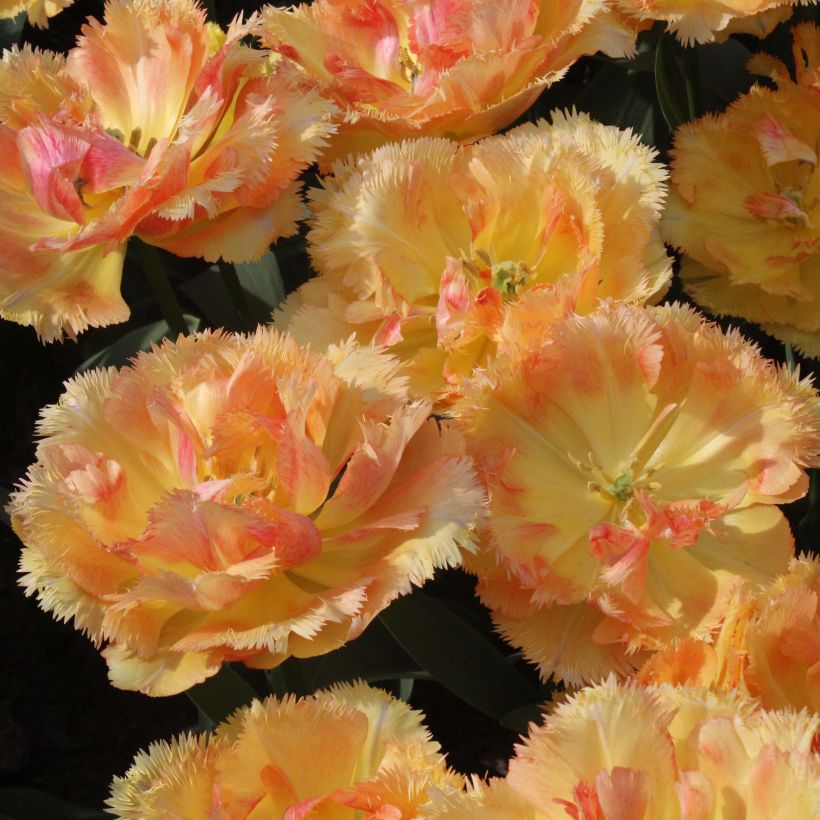

Plant habit
Flowering
Foliage
Botanical data
Tulipa
crispa
Vaya Con Dios
Liliaceae
Crisped Tulip, Curled Tulip
Cultivar or hybrid
Planting and care
Plant the bulbs in autumn, from September to December, at a depth of 15cm (6in), spacing them 10cm (4in) apart. The planting should be done in ordinary soil, slightly acidic, neutral, or slightly alkaline, loose, well worked, and well-drained. Never add undecomposed manure or compost to the planting soil, as this could cause the bulbs to rot. The double tulip 'Vaya con Dios' will thrive in moist to dry soil. Plant it in a good, sunny or partially shady location. Once flowering is complete, it is best to remove the fruits to avoid exhausting the plant. Allow the leaves to completely dry before cutting them. We recommend planting Heuchera, Tiarella, Brunnera, Bleeding Heart, Cypress Spurge, at the forefront of your flower beds, as their foliage will enhance the colors of your tulips and, during the season, they will elegantly conceal their yellowed leaves.
Planting period
Intended location
Care
-
, onOrder confirmed
Reply from on Promesse de fleurs
Haven't found what you were looking for?
Hardiness is the lowest winter temperature a plant can endure without suffering serious damage or even dying. However, hardiness is affected by location (a sheltered area, such as a patio), protection (winter cover) and soil type (hardiness is improved by well-drained soil).

Photo Sharing Terms & Conditions
In order to encourage gardeners to interact and share their experiences, Promesse de fleurs offers various media enabling content to be uploaded onto its Site - in particular via the ‘Photo sharing’ module.
The User agrees to refrain from:
- Posting any content that is illegal, prejudicial, insulting, racist, inciteful to hatred, revisionist, contrary to public decency, that infringes on privacy or on the privacy rights of third parties, in particular the publicity rights of persons and goods, intellectual property rights, or the right to privacy.
- Submitting content on behalf of a third party;
- Impersonate the identity of a third party and/or publish any personal information about a third party;
In general, the User undertakes to refrain from any unethical behaviour.
All Content (in particular text, comments, files, images, photos, videos, creative works, etc.), which may be subject to property or intellectual property rights, image or other private rights, shall remain the property of the User, subject to the limited rights granted by the terms of the licence granted by Promesse de fleurs as stated below. Users are at liberty to publish or not to publish such Content on the Site, notably via the ‘Photo Sharing’ facility, and accept that this Content shall be made public and freely accessible, notably on the Internet.
Users further acknowledge, undertake to have ,and guarantee that they hold all necessary rights and permissions to publish such material on the Site, in particular with regard to the legislation in force pertaining to any privacy, property, intellectual property, image, or contractual rights, or rights of any other nature. By publishing such Content on the Site, Users acknowledge accepting full liability as publishers of the Content within the meaning of the law, and grant Promesse de fleurs, free of charge, an inclusive, worldwide licence for the said Content for the entire duration of its publication, including all reproduction, representation, up/downloading, displaying, performing, transmission, and storage rights.
Users also grant permission for their name to be linked to the Content and accept that this link may not always be made available.
By engaging in posting material, Users consent to their Content becoming automatically accessible on the Internet, in particular on other sites and/or blogs and/or web pages of the Promesse de fleurs site, including in particular social pages and the Promesse de fleurs catalogue.
Users may secure the removal of entrusted content free of charge by issuing a simple request via our contact form.
The flowering period indicated on our website applies to countries and regions located in USDA zone 8 (France, the United Kingdom, Ireland, the Netherlands, etc.)
It will vary according to where you live:
- In zones 9 to 10 (Italy, Spain, Greece, etc.), flowering will occur about 2 to 4 weeks earlier.
- In zones 6 to 7 (Germany, Poland, Slovenia, and lower mountainous regions), flowering will be delayed by 2 to 3 weeks.
- In zone 5 (Central Europe, Scandinavia), blooming will be delayed by 3 to 5 weeks.
In temperate climates, pruning of spring-flowering shrubs (forsythia, spireas, etc.) should be done just after flowering.
Pruning of summer-flowering shrubs (Indian Lilac, Perovskia, etc.) can be done in winter or spring.
In cold regions as well as with frost-sensitive plants, avoid pruning too early when severe frosts may still occur.
The planting period indicated on our website applies to countries and regions located in USDA zone 8 (France, United Kingdom, Ireland, Netherlands).
It will vary according to where you live:
- In Mediterranean zones (Marseille, Madrid, Milan, etc.), autumn and winter are the best planting periods.
- In continental zones (Strasbourg, Munich, Vienna, etc.), delay planting by 2 to 3 weeks in spring and bring it forward by 2 to 4 weeks in autumn.
- In mountainous regions (the Alps, Pyrenees, Carpathians, etc.), it is best to plant in late spring (May-June) or late summer (August-September).
The harvesting period indicated on our website applies to countries and regions in USDA zone 8 (France, England, Ireland, the Netherlands).
In colder areas (Scandinavia, Poland, Austria...) fruit and vegetable harvests are likely to be delayed by 3-4 weeks.
In warmer areas (Italy, Spain, Greece, etc.), harvesting will probably take place earlier, depending on weather conditions.
The sowing periods indicated on our website apply to countries and regions within USDA Zone 8 (France, UK, Ireland, Netherlands).
In colder areas (Scandinavia, Poland, Austria...), delay any outdoor sowing by 3-4 weeks, or sow under glass.
In warmer climes (Italy, Spain, Greece, etc.), bring outdoor sowing forward by a few weeks.


































